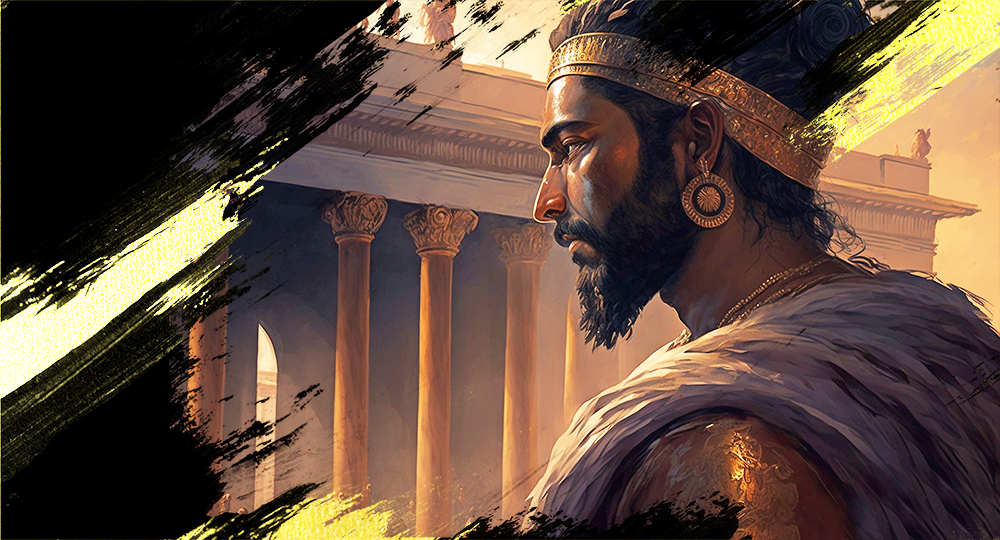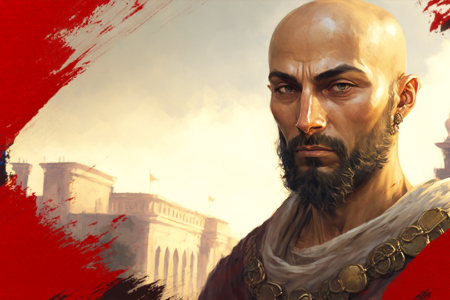Ahasuerus
He was emotional, impulsive, and wicked—and he was the man Esther was forced to marry.
King Solomon wrote, “The king’s heart is in the hand of the LORD, like the rivers of water; He [God] turns it wherever He wishes” (Prov. 21:1). Just as God controls nature in His sovereignty and providence, He also directs rulers, as seen in the book of Esther.
In Esther’s day, the king of the vast Persian Empire was Ahasuerus. He is called Xerxes in Greek and Khshayarsha in Persian. Some scholars believe Ahasuerus is a title meaning “chief of rulers,” while others believe it was the king’s name.
The King’s Background
Ahasuerus (Xerxes I) was the firstborn son of Darius I and the grandson of Cyrus the Great through his mother Atossa, Cyrus’s daughter. This line is also called the Achaemenid dynasty. The Persian Empire lasted more than 200 years, ending in 330 BC when it fell to Alexander the Great.
Cyrus began to rule in 550 BC. After conquering Babylon in 539 BC, he decreed that the Jews taken into exile could return to Jerusalem and rebuild their Temple.
Upon the death of his father, Ahasuerus became king and ruled over a vast kingdom of 127 provinces that stretched from India to Ethiopia. His throne was in Shushan (Hebrew for the Greek word Susa), the winter residence of Persian kings (Est. 1:1–2).
Immediately after Ahasuerus assumed the throne, he had to deal with a revolt in Egypt. One year later, he marched his army to Egypt and put down the rebellion.
The Babylonians were willing to accept Ahasuerus as their ruler because he had already ruled for 12 years on behalf of his father. But they soon rebelled against him because of his policies. As a result, Ahasuerus attacked Babylon; tore down its temples and the golden statue of the Babylonian god Marduk; and murdered the priests who tried to impede the destruction.
His thirst for power and control manifested itself when he unsuccessfully tried to subjugate Greece several times, despite his uncle’s advice to the contrary.
The King’s Character
It was said that Ahasuerus was extremely handsome, tall, and vigorous and looked every inch a king when seated on his white marble throne.
Like many heathen monarchs of his day, he was extremely wicked. Apart from being filled with pride and vanity, Ahasuerus had a volatile temper that exploded without warning, unleashing a torrent of brutality on unsuspecting people within his kingdom.
His huge harem served at his bidding. He made emotional promises without thinking and manipulated people to satisfy his personal whims without considering the consequences.
He also loved to hold elaborate, opulent banquets. His first, held in the third year of his reign, hosted all the officials in the Median-Persian Empire. It lasted “one hundred and eighty days in all [six months]” (vv. 3–4). As if that weren’t enough, at the conclusion, he held a weeklong party to display the glory and wealth of his kingdom to all his guests (vv. 5–6).
On the final day of the banquet, with everyone completely intoxicated and pursuing the lusts of the flesh, he summoned the eunuchs to bring his wife, Vashti, into the banquet hall “to show her beauty to the people and the officials” (v. 11). Although Scripture does not reveal what this command entailed, it no doubt meant the worst type of humiliation possible for Vashti. She refused, knowing that to defy the king might mean her death; and she was removed as queen, never to be heard of again (vv. 12–21).
When Ahasuerus’s fury subsided, he found himself in need of a beautiful woman to replace Vashti. So he sent officers out to comb his kingdom and seize beautiful young virgins. Among those taken was a Jewish girl named Esther, who was reared by her cousin Mordecai.
Esther was crowned queen; and Mordecai lingered inside the king’s gate, monitoring Esther’s welfare. While there, he overheard a plot to kill Ahasuerus and told Esther, who told the king, who had the traitors hung (2:1–23).
The Plot Unfolds
Ahasuerus then promoted Haman to a top position in the kingdom and ordered everyone to bow before Haman. When Mordecai refused, Haman hatched a plot to kill all the Jews, making them enemies of the state. Never once asking who these “certain people” were (3:8) whom Haman wanted killed, Ahasuerus impulsively granted Haman’s request.
Mordecai asked Esther to intervene. Knowing Ahasuerus loved parties, Esther invited him to a banquet to honor him and Haman. She refrained from revealing Haman’s plot at this feast, but instead requested that Ahasuerus and Haman come to a second feast the following day.
Overjoyed, Haman went home to tell his wife; and at her suggestion and that of his friends, he built 75-foot-high gallows from which to hang Mordecai.
But that night, Ahasuerus couldn’t sleep and had the Persian annals read to him. Taking notice of the earlier plot to kill him, he asked if Mordecai was rewarded for saving his life. Learning that he was not, Ahasuerus decided to remedy the omission.
Enter Haman. Ahasuerus asked him for suggestions on how to honor a man the king wants to reward. Thinking the king meant him, Haman said to dress the man in a royal robe and parade him through the city on a royal horse, proclaiming, “Thus shall it be done to the man whom the king delights to honor!” (6:9).
The king immediately told Haman, “Hurry . . . and do so for Mordecai the Jew who sits within the king’s gate!” (v. 10). Haman did as he was told before skulking back to his house in humiliation just in time for the king’s eunuchs to collect him for Esther’s second banquet.
At the second banquet, Esther begged for her life and that of her people. Outraged that someone would want to kill the queen and the Jews, Ahasuerus demanded, “Who is he, and where is he, who would dare presume in his heart to do such a thing?” (7:5).
Esther replied, “The adversary and enemy is this wicked Haman!” (v. 6). Stunned, Ahasuerus left the room enraged. Haman, evidently well acquainted with the king’s fierce temper, threw himself on Esther’s couch, begging for his life. When the king returned and saw Haman on Esther’s couch, he misinterpreted Haman’s motives; had Haman hauled away and hung on the gallows he had prepared for Mordecai; and gave Haman’s property to Esther.
However, the edict to kill the Jews could not be broken, according to the laws of the Medes and Persians. So the king gave Mordecai carte blanche to counter the decree in Ahasuerus’s name by granting the Jewish people permission to defend themselves. Thus, Esther rescued Mordecai and world Jewry.
The Latter Years
Ahasuerus spent his latter years overseeing building projects and indulging in pleasure. In time, he deteriorated and became a pawn in the hands of women and those who served him daily.
Eventually, a conspiracy developed to rid the empire of his rule. In 465 BC, Ahasuerus was murdered in his bedroom; and tradition says that Artabanus, believed to be his bodyguard, committed the act.
He was buried in a sepulcher next to the grave of his father, Darius I. Leaders within the Persian Empire crowned his son Artaxerxes I to be king of the empire. Artaxerxes reigned from 465 to 425 BC and, also in the providence of God, was the king whose cupbearer was Nehemiah.









Excellent summary of the story!
Very helpful in my study of Queen Esther.
Abundant Blessings!
I always love this story .❤️
Shalom,
This article is very insightful. Thank you.
Is there any way of guessing what happened to Esther? Did Jehovah bless her with children?
You leave us hungry for more!!